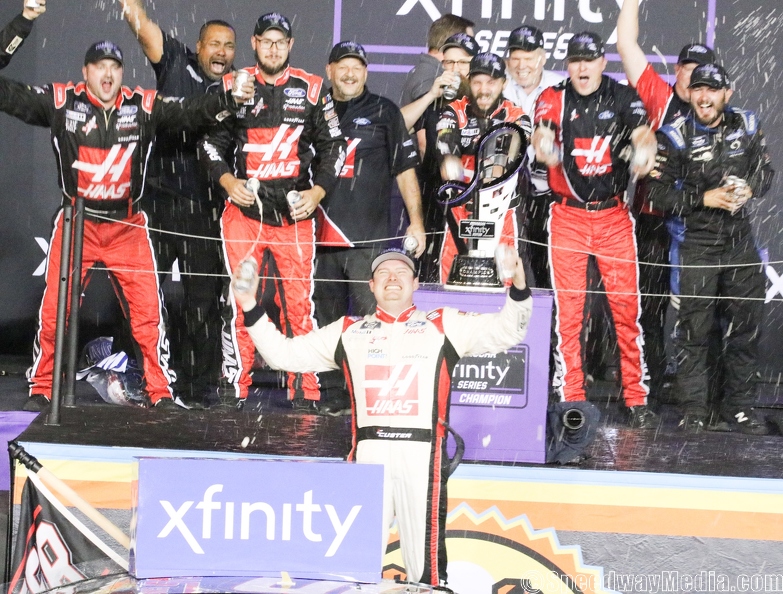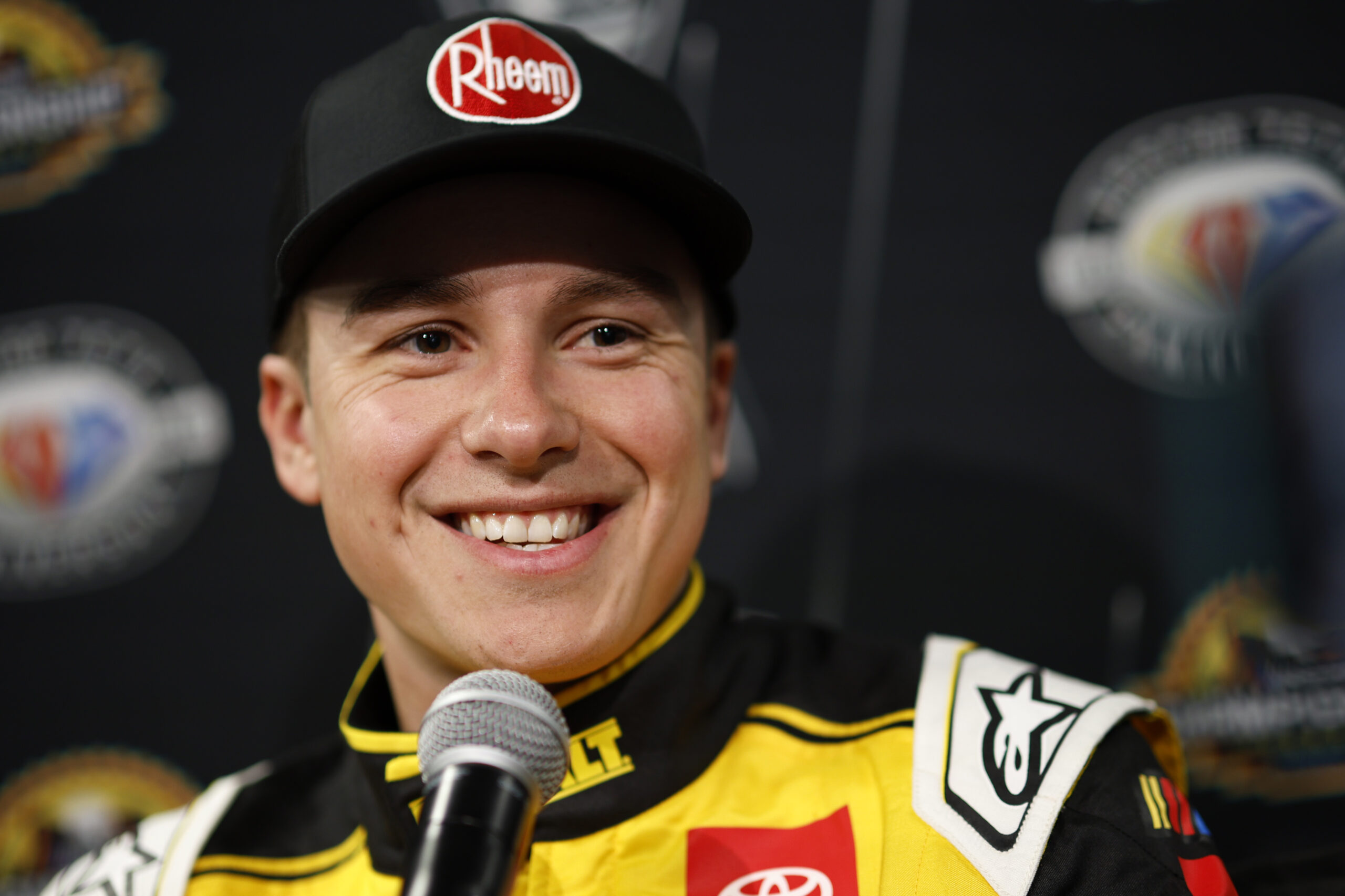The haulers rolled into Phoenix, Friday. Banners hang from the building facades and street signs. On the heels of the Texas Rangers winning their first World Series in Phoenix days earlier, four drivers face off for NASCAR’s biggest crown, the Bill France Cup.
With the curtain call on the horizon, I reflect on the good and the bad of the 75th season of NASCAR.
The good
The 1.5 mile package
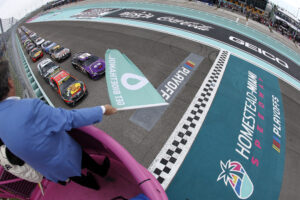
Last season, the NextGen Car gave the long maligned mile and a half tracks a boost in racing quality not seen in the NASCAR Cup Series since the days of the twisted sister car. Naturally, everyone expected this to continue in 2023.
The first trip to Las Vegas in March, however, almost shattered that thought.
Of the 13 lead changes, only two happened on track. The rest happened during pit cycles.
Did we witness the start of a massive step backwards on the intermediate tracks?
Thankfully, the rest of the season proved Las Vegas was an outlier, and NASCAR maintained the level of quality we saw in 2022.
Though it’s not perfect. Adding more horsepower and taking off more downforce would go a long way to taking the racing from an eight or nine to an 11.
Of course, I’m no engineer. So all I can do is trust that the engineering minds at NASCAR figure out how to make this work.
The schedule
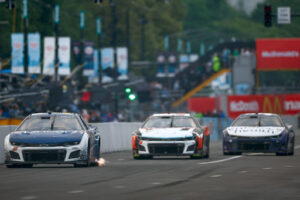
When I started covering NASCAR in 2016, schedule movement stagnated. Thanks to a terrible agreement NASCAR made with the tracks to guarantee their races for a period of five years, the schedule was usually a carbon copy of the previous season’s schedule. Hell, the 2019 schedule was a 100% copy/paste of 2018.
That made the 2020 schedule an Earth-shattering revelation (and that was before COVID threw a wrench into the operation).
Fast-forward to the present.
The variety and diversity of the schedule rocks!
NASCAR went from two road course races on the Cup Series schedule to six (but drops to five in 2024).
Yes, the road course package sucks and I’ll address that in a later section, but for most of my 29 years on this planet, NASCAR went to Sonoma Raceway, Watkins Glen International and that was it.
Now, the Cup Series visits Circuit of the Americas, the infield at Charlotte Motor Speedway and an honest to god street course race on top of the South Shore Line.
Not in my wildest dreams could I have imagined the NASCAR Cup Series race on a street course like IndyCar and Formula 1 do.
Nor did I see NASCAR return to North Wilkesboro. A pioneer track the league and its partners all but left for dead when I was a month from turning two.
Is it perfect, no. Not even close. Furthermore, I fear NASCAR might fall back into the complacency that left the schedule stuck in molasses in the coming years.
For now, however, the schedule realignments of the 2020s beats the copy/paste routine of the late 2010s.
The bad
The road course and short track package
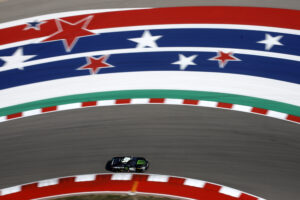
Circuit of the Americas showcased some of NASCAR at its best.
To borrow a line from former NASCAR Chairman and CEO, Brian France, this was “quintessential NASCAR.” Only instead of a poorly handled fustercluck over three races, it was two generational talents using every inch of real estate and an aero package on the razor’s edge of control to fight it out for the victory.
That was the peak.
Most weeks, NASCAR road course races (as well as short track races) resembled Formula 1 at its, well, most par for the course. Follow the leader and hope pit strategy cycles you ahead. After two years, is it time to increase horsepower, like everyone in the garage says over and over again?
NASCAR’s chief operating officer, Steve O’Donnell, said Friday that it’s one of many options on the table.
“For us, we’re going to look at shifting specifically around that at our next test and see what we can do,” he said. “There will be variations. Also some aero things we do with the underbody. There’s some things we found in Richmond from an aero standpoint that could work as well.”
He also mentioned factoring costs to OEMs to make more horsepower work.
“It’s not as simple as just upping the horsepower,” he said. “You better be ready for all your OE(M)s to be onboard. It better make sense for any potential new OEM and technology. It’s not just a short-term answer.”
Again, I type words onto digital paper for a living. So I don’t know if shifting is the problem.
What I’m certain of is that unless this is fixed soon, then that doesn’t bode well for the long-term heath of North Wilkesboro. The goodwill of its return won’t last forever, if the racing sucks.
The TV product
I’ll give NASCAR president Steve Phelps this. He acknowledged that the ratings aren’t great. Though he said it was “a mixed bag” with the Cup Series.
“NBC came back in a powerful way,” he said. “Those metrics are up. If you consider back in March we were down 15%, now we’re down mid single digits, we’re happy with where that is.”
That’s more than we got from France, who dodged or denied reality on that front.
Yet, neither pointed a finger at the elephant in the room.
The broadcast partners, especially FOX.
The problems with FOX and NBC deserves it own column, and the FOX foibles aren’t fresh in my mind at the back-end of the season.
With that said, however, I don’t think it’s a coincidence that the biggest ratings drop happened during the FOX portion (and Chase Elliott’s injury only explains it so much).
Put a bow on it
Overall, NASCAR’s 75th season was good, but could’ve been better.
The intermediate track package continues strong and the schedule has excellent variety. Hopefully, NASCAR finds the fix to the ailing short track and road course packages.
Though I’m not holding my breath on NASCAR calling out the broadcast partners.
NASCAR’s on a good trajectory, even though it’s a grind.
For now, let’s sit back and watch Christopher Bell, Ryan Blaney, William Byron and Kyle Larson race for the big prize, Sunday, at Phoenix Raceway.
That’s my view, for what it’s worth.

